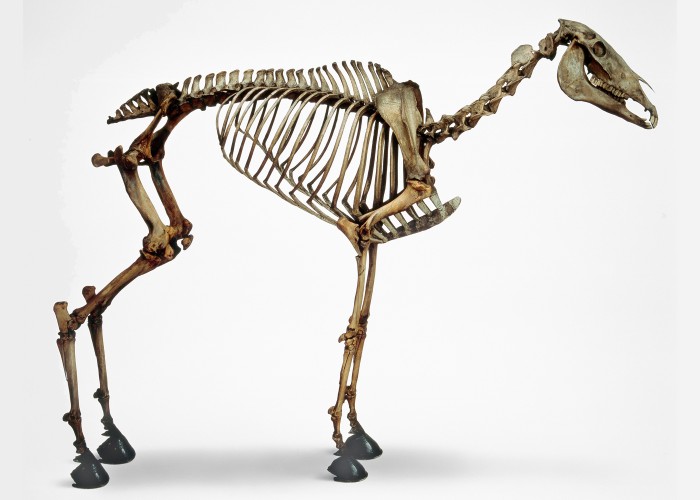“Marengo”, Napoleon’s Horse
This is the skeleton of Napoleon Bonaparte’s favourite steed, “Marengo”. An Arab stallion with a light grey coat, “Marengo” was a gentle animal, short for a warhorse at 14 hands high (1.4 metres tall at the shoulder). After over 15 years of faithful service, he carried Napoleon for the last time at the Battle of Waterloo.
“Marengo” was purchased in Egypt in 1799, when the horse was 6 years old and Napoleon Bonaparte was commanding the French Army. The horse traveled to France later that year, where Napoleon seized power in Paris and declared himself “First Consul”. One year later, the horse carried his new master into battle against the Austrians near the Italian village of Marengo. Victory allowed the French to conquer northern Italy, and a jubilant Napoleon renamed his charger “Marengo”.
“Marengo” served on many more military campaigns. The brave horse was wounded eight times without ever throwing his master from the saddle. Napoleon’s horses were trained to be fearless, obedient, and to remain calm on a chaotic battlefield. French riding masters would fire guns close to the horses’ heads, suddenly wave banners or swords, and drive dogs to run through their legs. Only horses that could be trusted not to bolt or rear up were allowed to carry the French Emperor.
After the French defeat at Waterloo in 1815, “Marengo” was sold to a British officer. The horse was put on display in London and viewed by the public, who were fascinated by everything to do with Waterloo.
Marengo died in 1831 at the impressive age of 38 years old. He outlived Napoleon, who had died in exile a decade before.
-
Curatorial info
- Originating Museum: National Army Museum
- Accession Number: NAM. 1963-09-89-1
- Material: Bone, steel, wire
- Technique: Taxidermy
-
Use this image
You can download a higher resolution image below, but please note the licence type and copyright holder.
- Rights Holder: Copyright National Army Museum.
- License Type: All Rights Reserved
Find it here
This object is in the collection of National Army Museum











